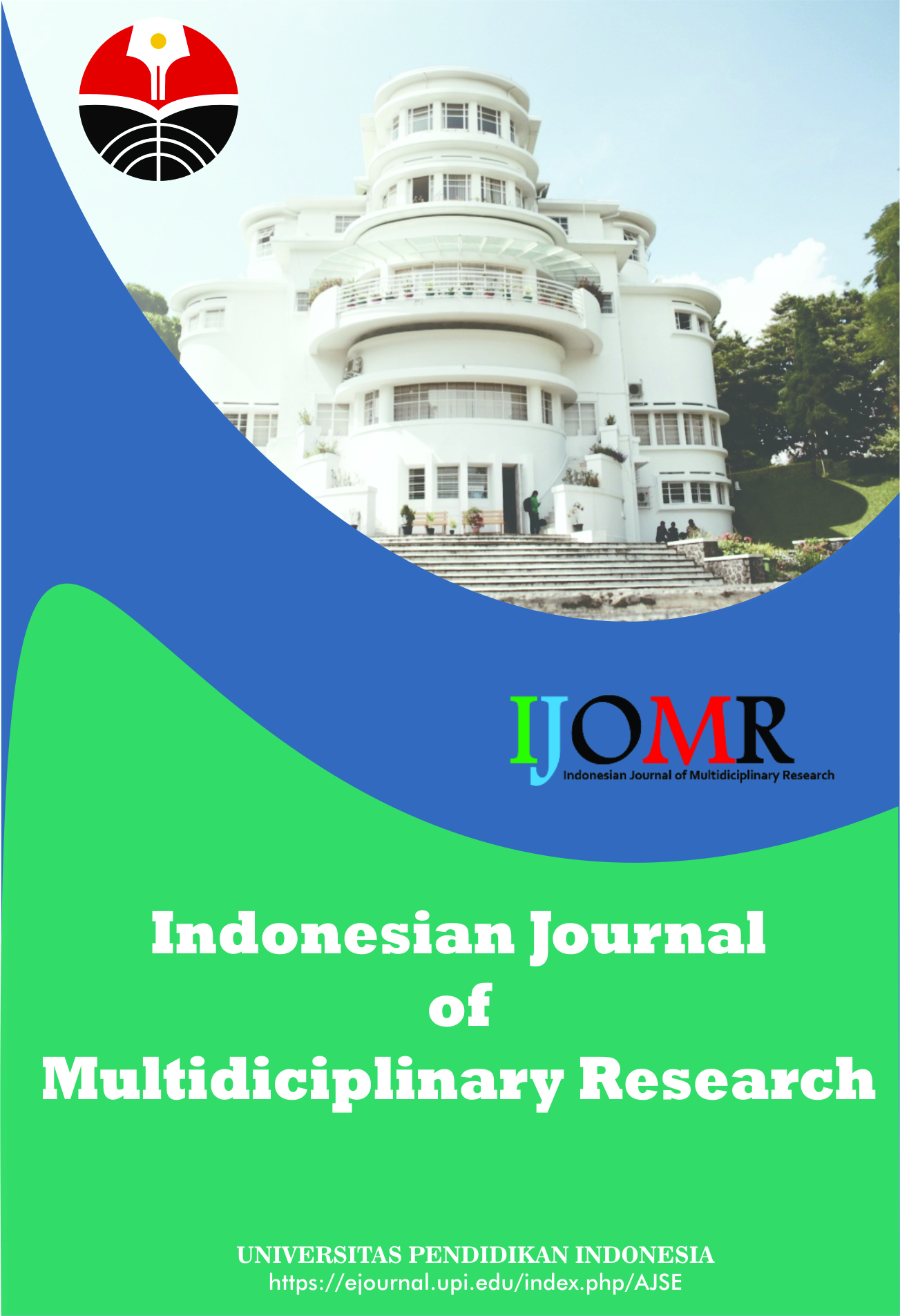Post-Traumatic Counselling Through Group Games
Abstract
Keywords
Full Text:
PDFReferences
Akresh, R. (2016). Climate change, conflict, and children. The Future of Children, 26(1) 51-71.
Ariefka, Y., Sari, K., and Yulandari, N. (2018). Memaafkan pelaku perkosaan di masa konflik: perjalanan panjang korban konflik di Aceh. Seurune: Jurnal Psikologi Unsyiah, 1(2), 58-83.
Astuti, A. D. (2013). Model layanan BK kelompok teknik permainan (games) untuk meningkatkan keterampilan komunikasi interpersonal siswa. Jurnal Bimbingan Konseling, 2(1), 50-56.
Ayer, L., Venkatesh, B., Stewart, R., Mandel, D., Stein, B., and Schoenbaum, M. (2017). Psychological aspects of the Israeli–Palestinian conflict: A systematic review. Trauma, Violence, and Abuse, 18(3), 322-338.
Barthassat, J. (2014). Positive and negative effects of parental conflicts on children’s condition and behaviour. Journal of European Psychology Students, 5(1), 10-18.
Bennett, I. M., Schott, W., Krutikova, S., and Behrman, J. R. (2016). Maternal mental health, and child growth and development, in four low-income and middle-income countries. Journal Epidemiol Community Health, 70(2), 168-173.
Buchmann, K. (2014). ‘You sit in fear’: understanding perceptions of nodding syndrome in post-conflict northern Uganda. Global Health Action, 7(1), 1-9.
De Arellano, M. A. R., Lyman, D. R., Jobe-Shields, L., George, P., Dougherty, R. H., Daniels, A. S., and Delphin-Rittmon, M. E. (2014). Trauma-focused cognitive-behavioral therapy for children and adolescents: assessing the evidence. Psychiatric Services, 65(5), 591-602.
Duenyas, D. L., Akcil, S., and Osborn, C. (2020). Professional adjustment experiences of international counseling graduates. International Journal for the Advancement of Counselling, 42, 21-36.
Dugal, C., Girard, M., Bélanger, C., Sabourin, S., Bates, E. A., and Godbout, N. (2021). Psychological intimate partner violence and childhood cumulative trauma: the mediating role of affect dysregulation, maladaptive personality traits, and negative urgency. Journal of Interpersonal Violence, 36(11-12), 5101-5121.
Erfayliana, Y. (2016). Aktivitas bermain dan perkembangan jasmani anak. TERAMPIL: Jurnal Pendidikan dan Pembelajaran Dasar, 3(1), 145-158.
Harahap, S. (2018). Konflik etnis dan agama di indonesia. Jurnal Ilmiah Sosiologi Agama (JISA), 1(2), 1-19.
Harpendeya, G., Sumantri, S. H., and Wahyudi, B. (2022). Pendidikan perdamaian: sebuah urgensi di tengah maraknya konflik sosial berdimensi suku, agama, ras, dan antar-golongan di indonesia. Jurnal Ilmiah Mimbar Demokrasi, 21(2), 77-86.
Hartani, M., and Nulhaqim, S. A. (2020). Analisis konflik antar umat beragama di Aceh singkil. Jurnal Kolaborasi Resolusi Konflik, 2(2), 93-99.
Hestyaningsih, L., and Pratisti, W. D. (2021). Efektivitas permainan tradisional dakon untuk meningkatkan kemampuan berhitung pada anak tunagrahita. Jurnal Intervensi Psikologi, 13(2), 161-174.
Irman, I. (2017). Nilai-nilai karakter pada anak dalam permainan tradisionan dan moderen. KONSELI: Jurnal Bimbingan Dan Konseling (E-Journal), 4(2), 89-96.
Kadir, A., Shenoda, S., Goldhagen, J., Pitterman, S., Suchdev, P. S., Chan, K. J., and Arnold, L. D. (2018). The effects of armed conflict on children. Pediatrics, 142(6), 1-16.
Kressel, K., Henderson, T., Reich, W., and Cohen, C. (2012). Multidimensional analysis of conflict mediator style. Conflict Resolution Quarterly, 30(2), 135-171.
Maulidia, D. N., Kurniawan, M. R., and Yasin, M. (2023). Faktor-faktor krisis dan dampak krisis yang pernah terjadi di Indonesia sehingga mengakibatkan kerapuhan fundamental. Student Scientific Creativity Journal, 1(4), 181-193.
Murray, J. S. (2016). Displaced and forgotten child refugees: a humanitarian crisis. Journal for Specialists in Pediatric Nursing, 21(1), 29-36.
Ocktaviana, S., Santoso, W. M., and Purwoko, D. (2014). Peran-peran perempuan di wilayah konflik: antara korban, penyintas, dan agen perdamaian. Jurnal Masyarakat dan Budaya, 16(3), 383-398.
Prasojo, Z. H., and Pabbajah, M. (2023). Akomodasi kultural dalam resolusi konflik bernuansa agama di indonesia. Aqlam: Journal of Islam and Plurality, 5(1), 1-28.
Pritchard, K., and Whiting, R. (2014). Baby boomers and the lost generation: on the discursive construction of generations at work. Organization Studies, 35(11), 1605-1626.
Rosalina, R., Prawitasari, M., Rochgiyanti, R., and Anis, M. Z. A. (2022). Trauma emosional yang dialami masyarakat banjar pasca peristiwa jum'at kelabu. Prabayaksa: Journal of History Education, 2(1), 33-42.
Rusmana, N., Budiman, N., and Muqodas, I. (2017). Reduksi sindrom trauma tsunami melalui cognitive-behavior therapy. Proceeding IAIN Batusangkar, 1(1), 1-21.
Safi, J. (2017). Konflik komunal: Maluku 1999-2000. ISTORIA: Jurnal Pendidikan dan Sejarah, 12(2), 33-44.
Sugara, G. S. (2017). Integrasi terapi sandtray dengan pendekatan konseling berfokus solusi pada anak yang mengalami trauma. Jurnal Fokus Konseling, 3(1), 32-46.
Suprapto, W. (2018). Relokasi masyarakat madura di singkawang sebagai bagian dari proses resolusi pasca konflik etnisitas di kabupaten sambas. Jurnal Pendidikan IPS Indonesia, 3(2), 33.
Tajuddin, M. S., Sani, M. A. M., and Yeyeng, A. T. (2016). Berbagai kasus konflik di indonesia: dari isu non pribumi, isu agama, hingga isu kesukuan. Sulesana: Jurnal Wawasan Keislaman, 10(1), 63-72.
Tate, K. A., Bloom, M. L., Tassara, M. H., and Caperton, W. (2014). Counselor competence, performance assessment, and program evaluation: using psychometric instruments. Measurement and Evaluation in Counseling and Development, 47(4), 291-306.
Thompson, B. L., and Waltz, J. (2010). Mindfulness and experiential avoidance as predictors of posttraumatic stress disorder avoidance symptom severity. Journal of Anxiety Disorders, 24(4), 409-415.
Tischer, C., Gascon, M., Fernández-Somoano, A., Tardón, A., Materola, A. L., Ibarluzea, J., and Dadvand, P. (2017). Urban green and grey space in relation to respiratory health in children. European Respiratory Journal, 49(6), 1-12.
Tualeka, M. W. N. (2017). Teori konflik sosiologi klasik dan modern. Al-Hikmah: Jurnal Studi Agama-Agama, 3(1), 32-48.
Williams, B., Cassar, C., Siggers, G., and Taylor, S. (2016). Medical and social issues of child refugees in Europe. Archives of Disease in Childhood, 101(9), 839-842.
Zayeni, D., Raynaud, J. P., and Revet, A. (2020). Therapeutic and preventive use of video games in child and adolescent psychiatry: A systematic review. Frontiers in Psychiatry, 11(36), 1-13.
DOI: https://doi.org/10.17509/ijomr.v3i2.60057
Refbacks
- There are currently no refbacks.
Copyright (c) 2023 Kantor Jurnal dan Publikasi, Universitas Pendidikan Indonesia (UPI)

This work is licensed under a Creative Commons Attribution-ShareAlike 4.0 International License.
Indonesian Journal of Multidiciplinary Research (IJOMR) is published by Universitas Pendidikan Indonesia (UPI)















